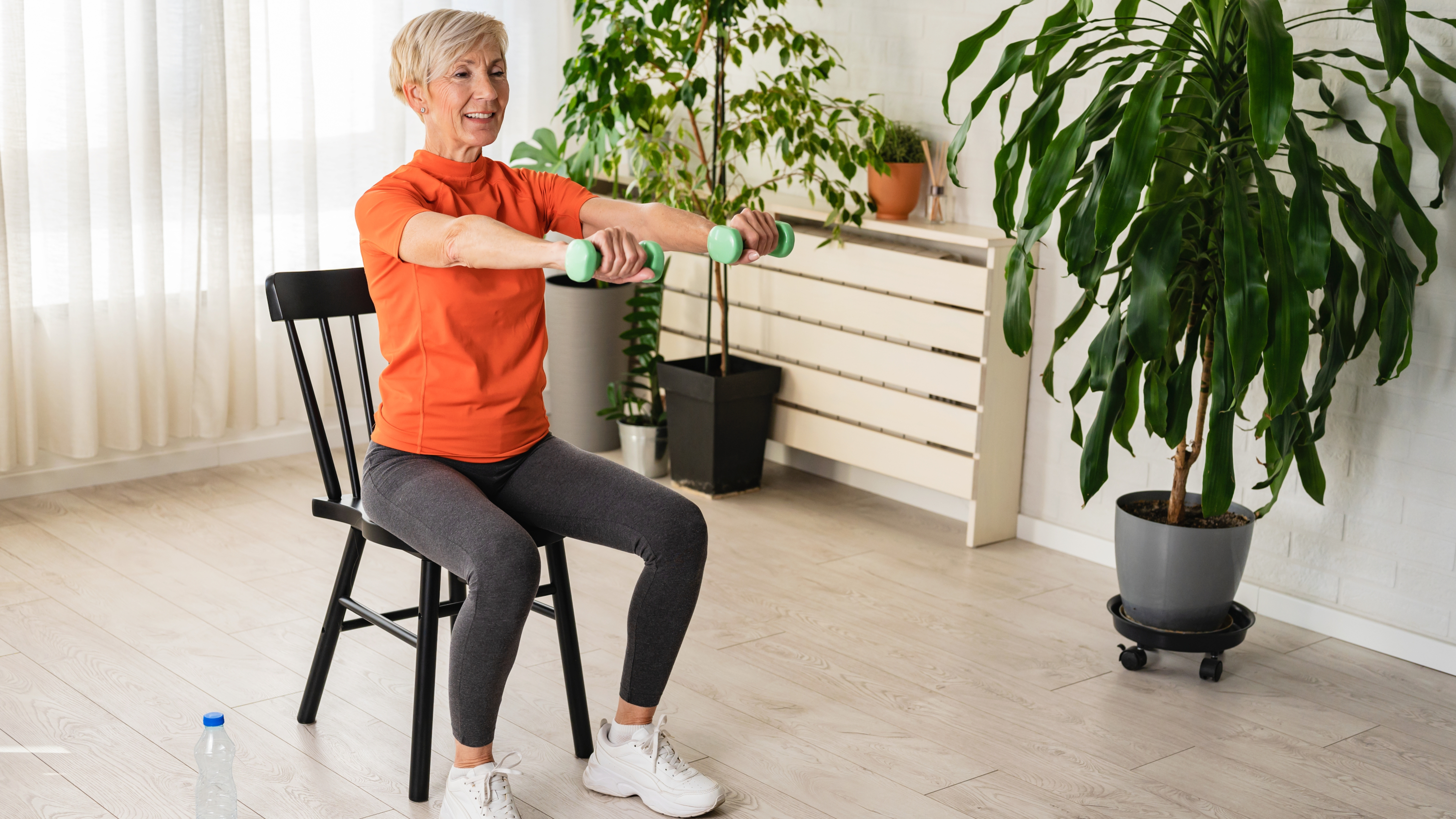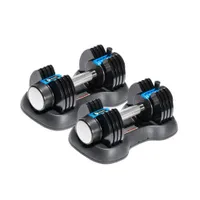Over 70? A trainer swears by these 7 knee-friendly moves for building full-body strength
This workout is a low-impact way to build strength all over

If you want to ensure you're building strength across your whole body but don’t like workouts that put a lot of strain on your joints, especially the knees, you’ve come to the right place. You don’t need to worry about squats or burpees. Instead, try this low-impact, strength-building circuit from trainer Ed Gemdjian.
As we get older, tightness can build up around the quads, hips and glutes, but stopping movement isn’t the answer. Which is why Gemdjian has created this full-body workout to help keep you moving, release tension and safely build strength, even if you’re after gentler, joint-friendly exercises.
Please only try this routine if you are able and listen to your body, especially if you have any injuries or limitations.
Some of the exercises in this routine are purely bodyweight, but you may need a chair or bench for support. A few moves use a pair of the best adjustable dumbbells or one of the best resistance bands.
Before you give the routine a go, just note that there is no pressure to lift heavy; the weight is just there to add a little challenge and help engage your muscles more.
These are a pair of our favorite budget-friendly dumbbells, with an easy-grip handle (perfect for sweaty hands) and a quick adjustment slider so you can change loads easily between exercises. This is a nice 17% discount in Amazon's early Black Friday sale.
1. Chair Sit-to-Stand
- Focus: Quads, glutes and core
- How: Sit on a sturdy chair with feet hip-width apart. Lean slightly forward, brace your core and drive through your heels to stand tall. Slowly lower back down under control.
- Regression: Use your hands on the chair for support. After all, we all need to be able to sit and stand up from a chair.
- Progression: Hold a dumbbell.
2. Hip Hinge Deadlift
- Focus: Glutes, hamstrings and spinal erectors
- How: Stand tall with knees soft. Push your hips back as your torso tilts forward, keeping your spine neutral and shoulders pulled back. Squeeze your glutes to return to a standing position.
- Regression: Perform with no load, focusing on hip movement. Use the back of a chair to provide a target for your hips to reach behind you.
- Progression: Add dumbbells or a resistance band looped under your feet.
3. Dumbbell or Banded Row
- Focus: Lats, rhomboids, posterior shoulders
- How: Hinge slightly at the hips with a flat back, holding dumbbells or band handles. Pull your elbows back and squeeze your shoulder blades together.
- Regression: Perform one arm at a time with hand support on a chair.
- Progression: Add a pause at the top or increase resistance.
4. Incline Push-Up or Standing Shoulder Press (choose based on comfort)
Option A: Incline push-Up
- Focus: Chest, shoulders, triceps
- How: Place your hands on a bench or countertop, step back so your body forms a straight line, then lower your chest toward your hands. Press away and fully extend your arms.
- Regression: Use a higher surface, like a wall.
- Progression: Lower the surface height.
Option B: Standing shoulder press
Get instant access to breaking news, the hottest reviews, great deals and helpful tips.
- Focus: Shoulders, upper back and triceps
- How: Stand tall with feet grounded and dumbbells at shoulder height. Press overhead, avoiding arching the lower back, then lower slowly.
- Regression: Use one arm at a time or lighter weights.
- Progression: Alternate arms or add a slow eccentric phase.
5. Supported Step-Back or Reverse Tap
- Focus: Glutes, quads, hip stabilizers
- How: Hold a chair or wall for balance. Step one foot back, lightly tapping your toe behind you while keeping the front knee soft and tracking over the ankle. Return to standing.
- Regression: Keep both feet grounded and shift weight backward.
- Progression: Add a small knee bend or light dumbbells.
6. Lateral Lunge with Contralateral Reach
- Focus: Glutes, adductors, obliques, balance
- How: Step out to one side and push your hips back into a shallow lunge. Reach your opposite hand toward the outside foot (right hand to left foot, for example), keeping your spine long and core braced.
- Regression: Keep the reach small and range shallow.
- Progression: Add a light dumbbell or band, or increase range if comfortable.
7. Standing Banded Pallof Press
- Focus: Core, anti-rotation strength, posture
- How: Anchor a band at chest height. Hold it close to your chest with tension, step away from the anchor and press your arms straight forward. Hold for two seconds, resisting rotation, then return.
- Regression: Sit in a chair for more stability.
- Progression: Increase band tension or perform from a half-kneeling position.

Follow Tom's Guide on Google News and add us as a preferred source to get our up-to-date news, analysis, and reviews in your feeds.
More from Tom's Guide
- 5 simple tips a Pilates instructor wants every beginner to know
- Try this easy 5-move standing core workout if you want strength without getting on the floor
- This workout skips sit-ups and crunches: Here's a trainer's 4-move routine for building a stronger core over 50

Jessica has been a fitness writer at Tom’s Guide since 2023, bringing three years of experience writing about health, fitness, and the great outdoors. Her passion for exercise began during her childhood, where she spent weekends hiking and competing in local athletics club events. After earning a master’s degree in journalism from Cardiff University, Jessica found the perfect way to combine her love of storytelling and fitness into a career.
Jessica is passionate about testing fitness gear and tech, using her reviews to help readers make informed buying decisions. She ran her first marathon in April 2024, finishing it in 3 hours and 48 minutes. Through her training, she’s developed a deep understanding of what it takes to grow as a runner, from effective workouts and recovery techniques to selecting the right gear for every challenge.
When she’s not at her desk, Jessica enjoys spending time in the kitchen crafting new recipes, braving cold water swims and hiking.
You must confirm your public display name before commenting
Please logout and then login again, you will then be prompted to enter your display name.


